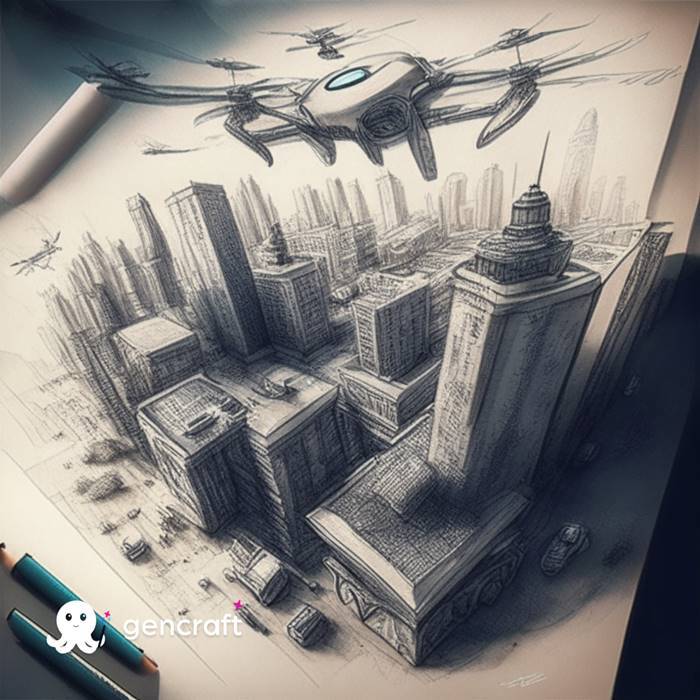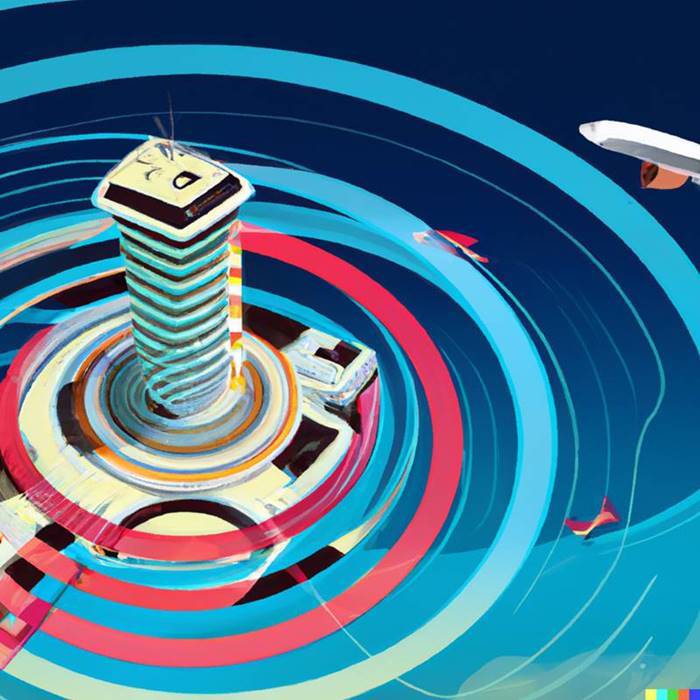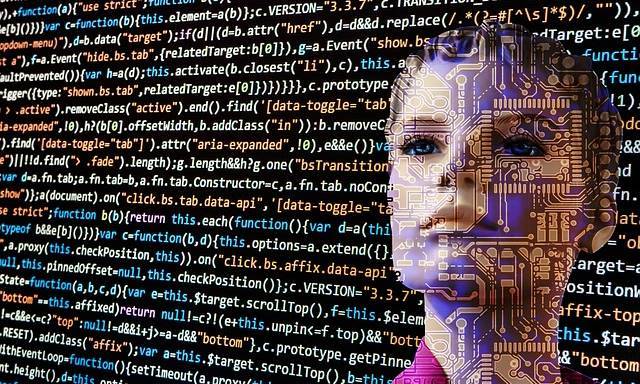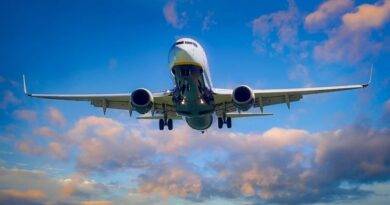The Rise of Artificial Intelligence-Generated Visuals: Creating Aviation Imagery from Text Descriptions
Artificial Intelligence (AI) has revolutionized various industries. And one of the latest advancements in this field is the creation of visuals from text descriptions. Many companies now offer AI-supported software that can generate images based on textual inputs. And this technology has found applications in diverse domains, including aviation. So let’s dive into the Rise of Artificial Intelligence-Generated Visuals
Gone are the days when aviation visuals were limited to actual photographs or hand-drawn illustrations. With the advent of AI-generated visuals, aviation companies can now create realistic and detailed images that depict complex aircraft, airports, and aerial scenes, just by providing text descriptions. This technology has opened up new possibilities for visual storytelling, marketing, training, and simulation in the aviation industry.
Marketing and Advertising
One notable use case of AI-generated aviation visuals is in marketing and advertising. Aviation companies can now create eye-catching images for their promotional materials, websites, and social media campaigns, without the need for expensive photo shoots or time-consuming graphic design. By simply describing the desired visual in text, such as “a passenger jet soaring over a scenic mountain range at sunset,” the AI software can generate a stunning image that captures the essence of the scene. This allows aviation companies to create visually appealing content that resonates with their target audience and enhances their brand image.
Training and Simulation
Another application of AI-generated aviation visuals is in training and simulation. Aviation training often involves complex scenarios, such as emergency procedures or aircraft operations, that can be challenging and costly to replicate in real-life. AI-generated visuals can simulate these scenarios effectively, allowing trainees to practice and hone their skills in a safe and controlled environment. For example, a pilot undergoing training can visualize and practice emergency landings, instrument approaches, or cockpit procedures through AI-generated visuals that provide a realistic representation of the scenarios. This not only improves training efficiency but also reduces costs associated with physical simulations or real-flight training.

Aviation Simulations for Research and Development Purposes
Furthermore, AI-generated aviation visuals can also be used in aviation simulations for research and development purposes. For instance, aerospace engineers can use these visuals to test and validate new aircraft designs, evaluate aerodynamic performance, or analyze complex flight dynamics. This can accelerate the aircraft development process and optimize design iterations, ultimately leading to more efficient and safer aircraft.
OpenAI, NVIDIA, GANPaint, Gencraft…
Several companies have already ventured into the field of AI-generated aviation visuals, offering cutting-edge software that can transform text descriptions into realistic images. One notable example is OpenAI, a leading AI research organization, which has developed models like DALL·E that can generate high-quality images from textual prompts. Another example is NVIDIA, a leading technology company, which has developed the GANPaint Studio that allows users to generate aviation images by simply drawing rough outlines of the desired scene.

However, it’s important to note that AI-generated visuals also raise ethical and legal considerations. As these visuals are generated by machines, there are concerns about intellectual property rights, copyright infringement, and potential misuse. Companies and users must be mindful of these issues and ensure that the generated visuals comply with relevant laws and regulations.
In conclusion, the rise of AI-generated aviation visuals has transformed the way aviation companies create and use visual content. From marketing and advertising to training and simulation, this technology has enabled aviation companies to create realistic and detailed images from text descriptions, opening up new opportunities for innovation and efficiency. With the advancements in AI technology, we can expect further developments in this field, making AI-generated visuals an integral part of the aviation industry.
References:
- OpenAI. (2021). DALL·E: Creating Images from Text. Retrieved from https://openai.com/dall-e/
- NVIDIA. (2021). NVIDIA GANPaint Studio. Retrieved from https://www.nvidia.com/en-us/research/ai-playground/
- Huhle, B., Gerdes, J. (2019). Generative Adversarial Networks (GANs) in Aviation – A Review. IEEE Aerospace Conference. DOI: 10.1109/AERO.2019.8741782 – This academic paper provides an in-depth review of the use of Generative Adversarial Networks (GANs) in aviation, including the generation of visuals from textual descriptions.
- Li, X., Liang, X., Shen, C., Yang, J., Liu, L. (2019). Text to Image Synthesis via Generative Adversarial Training. IEEE Transactions on Multimedia, 21(6), 1468-1481. DOI: 10.1109/TMM.2019.2911370 – This research article discusses the use of Generative Adversarial Networks (GANs) for text-to-image synthesis, which is relevant to the generation of aviation visuals from text descriptions. – Artificial Intelligence Generated Visuals
- Watson, H., Charnley, A., Ijaz, A., Chatzimichali, A., & Lavelle, M. (2020). The Use of Artificial Intelligence and Machine Learning for 3D Scene Reconstruction and Visualisation in Aviation. In AIAA Aviation 2020 Forum. DOI: 10.2514/6.2020-3053 – This conference paper presents the use of AI and machine learning for 3D scene reconstruction and visualization in aviation, including the generation of visuals from text descriptions. – Artificial Intelligence Generated Visuals
Recommended article – Artificial Intelligence and Airport Management



